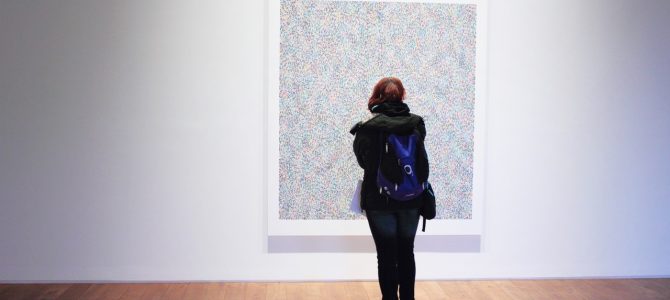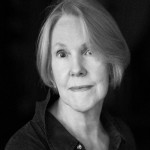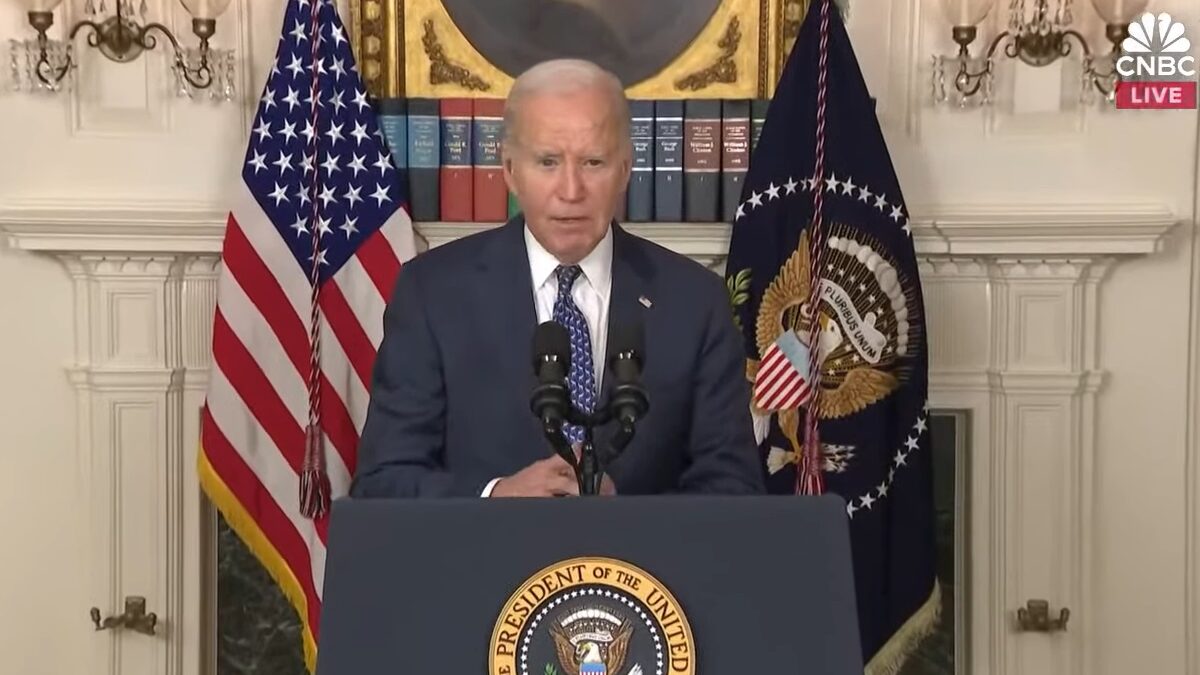
Shut up and go fund yourself. That’s President Trump’s message to arts organizations in his proposal for eliminating the National Endowment for the Arts and National Endowment for the Humanities. The College Art Association is not amused. Declaring “complete and total opposition” to the proposal, it offers toolkits to members to arm them for a fight. The CAA kvetches:
[The proposal] appears to be a deliberate, ominous effort to silence artistic and academic voices, representing a potentially chilling next step in an apparent effort to stifle and eradicate oppositional voices and cultural output from civic life. By eliminating the support for these agencies, the government undermines the unifying potential of the arts, culture, and education that encourages and nurtures communication and positive discussion.
How does art’s “unifying potential” square with its hallowed ability to showcase “oppositional voices”? As David Harsanyi wrote recently in The Federalist: “The Left owns the art space.” Artistic freedom runs in one direction only: leftward. Behind the rhetoric of public interest lies an ideological drive to promote the party spirit on issues that have nothing to do with “culture” on any aesthetic level.
It is fun to stick it to a self-regarding bureaucracy with no more natural right to public monies than the National Skeet Shooting Association or the NASCAR Foundation. But then what? A culture war is not a street fight. Axing the endowments scores points but still leaves the arts captive to academia and its maze of orthodoxies. That old Leninist slogan, “Art belongs to the sphere of ideology,” is not posted over art school doors, but it is written in the “cultural output” of art departments everywhere.
The Art of Shaping Attitudes
Consider the School of Visual Arts (SVA), a top-tier training ground for practical and fine arts. It is a premier example of the dominant tenor of things. A year-end exhibition of projects by students taking a MA in Curatorial Practice opens April 21. A press release states:
The breadth of these projects reflects our range of concerns as citizens of a contemporary world entering a new period of political crisis, technological disruption, and environmental danger, while the artists joining with us in our thinking and production as curators bring extraordinary, inspirational energy to the tasks at hand.
Note the implication: Artists “join” in producing work that reflects the mental universe of engagé curators. In this schema, curators are a credentialed breed of catechists who define the tasks and directions of art worthy of the name. The mindset leapfrogs over the traditional curator’s role as a trained guardian and overseer of specific collections or genres. Custodial curators remain vital to major institutions with time-tested collections. In the contemporary field, however, curatorship mutates into the production of attitudes—a politicized function.
Also an overwhelmingly female one. At SVA, seven of this year’s eight graduate projects are curated by women. One is a collaborative effort by eight women. The sex imbalance tallies with a 2012 survey by Bard’s Center for Curatorial Studies citing a preponderance of young women entering the field. That ratio brings with it a bent toward performance art—feminist panty raids on patriarchal culture and its categories.
The themes of SVA’s roster of projects are a bellwether of the future of the arts. Half-baked displays of intellectualism rule over merit or quality in the playground of academic activism.
“Pre-Future: Examining the Post-Contemporary,” curated by Valerie Amend, is an online project in the I’m-cooler-than-you genre. Versed in the higher incoherence, Amend explains:
If the post-contemporary is the erasure of the present, Pre-Future examines how to make the most of a hybridized temporality. . . . [It presents] a speculative temporality predicated on accelerated economies and preemptive political patterns that threaten individual freedoms and the repression of an emancipatory cosmopolitanism. . . . It presents resources—guides to anonymity, exposure of censorship, resistance to surveillance, ways to welcome people of color—that can be used to ameliorate our future condition.

“Pre-Future” suggests what artistic workers must do to keep pace with our dissolving “time complex.” It has something to do with “the precarity of our current cultural climate.” Precarity is the trendy buzzword on campus that signals opposition to the miseries of capitalism, hints at having heard of Karl Polanyi, and flashes sympathy with the precariat.
Let’s Take a Virtual Tour of Today’s Art World
“continuums: time beyond lifetimes,” assembled by Patrick Jaojoco, identifies itself as “an intersectional exhibition of geological, cultural, and biological histories viewed in light of the evisceration of truth standards today.” Jaojoco, the program’s sole male, clarifies:
[It] is an experiment in constructing conceptual apparatuses that activate in the mind of the visitor both social and geological histories, situating the present in a radically broad intersection of human and nonhuman pasts. . . . It involves the reading and writing of history in a way that destabilizes hegemonic apparatuses for history, as the artworks in the exhibition attempt to restructure visitors’ temporal focuses.
Translated, that means history is whatever one’s conceptual apparatus wants it to be. The recital represents the success of what Keith Windschuttle called “the killing of history.” Art provides an easy strike against the historian’s traditional methodology. Aspiration to the objective truth of things disappears—along with capitalization—in the subjectivity of art.
“Sexual Fragments Absent,” curated by Ikechukwu Casmir Onyewuenyi, is a one-night exhibition and performance by three black women. The race-and-gender creed lends transcendent purpose to old-fashioned S&M. Here are women “whose artistic practices are invested in the politics of race, sex and affect within BDSM (bondage and discipline, dominance and submission, sadism and masochism).”
[The performance] highlights how black women BDSMers further kink the binaries of black/white, master/slave, dom/sub, fantasy/reality, pleasure/pain, mind/body . . . .
Saddled with the historical violence of chattel slavery and domination, the practice and aesthetics of BDSM not only complicate the contours of black bodies but also suffocate the possibilities of gratification or, bluntly, getting off.
“Encounters,” curated by Vera Petukhova, showcases four performance artists:
The focus of the exhibition will be notions of ‘alien-ness’ and how that can be made manifest through various subjectivities via live performance. These different investigations of the alien come into play through fictive narratives, psychological alienation, as well as Brechtian notions surrounding the critical space between audience and performer that disturb, disrupt or alienate.
The project’s muse feeds on the romantic fallacy that artists are provocateurs at war with established truth. Art’s purpose is to needle, pester, and agitate. Inducing outrage is the artist’s ordained contribution to cultural growth.

“Life in the Conditional,” curated by Jovana Venegas, looks at six artists from diverse geopolitical backgrounds at work around the globe. Their assorted ethnicities is a lens through which to analyze our current sociopolitical condition. SVA intones: “Currently, there is a complete dissolution of order, and fact and fiction have bled into each other. Venegas peers into various narratives and forms that artists are deploying. . . . These liminal spaces are models of resistance to dominant patriarchal structures—precisely what our sociopolitical moment of precarity needs.”
Precarity. That word again. Here it couples with such liminalities as the work of Dutch artist Anouk Kriuthof, whose gauzy arrangements are made from blurred screen shots from the Instagram accounts of American corporations and government agencies such as the Transportation Security Administration. Attitude is a qualifying factor.

“The Map is Not the Territory,” curated by a sisterhood of eight diverse women also from around the globe, aims to:
. . . interrogate discrepancies between reality and belief in response to the current ubiquitous use of non-sequiturs in the public arena. Conceived at the dawn of an unprecedented, divisive presidency, the exhibition upholds the spirit of resistance against misrepresentation and the commandeering of identities in our history and contemporary culture. . . . All works question our preconceived understandings of entities, whether it is people, places or concepts, by subverting misrepresentations of reality.
Might interrogations require the rigor of words? Not at all. Linear thinking, with its inhibiting emphasis on rationality, is a patriarchal red herring. Performance art subverts patriarchal logic by defying debate. It is an experience, not a discussion. One artist uses mannequins to question the binary notions of “genuine” and “performative” gender roles. Another uses a childhood toy to “mimic the precarious relations between social issues.” Yeats understood: “You can refute Hegel but not the saint or the Song of Sixpence.”
We Hate the West that Made All This Possible
Ambitious young artists adapt to the game. Eager for recognition, they assume an adversarial or political-sounding stance. If any posture is invisible in the art itself, it has to appear in an accompanying rationale.
Consequently, Sanna Almajedi’s colorful and graphically appealing “Enfolding and Unfolding: Geometric Abstraction in Motion” does a handstand to align itself with the gospel of identity politics. SVA’s promo tells us the project “challenges hegemonic Western dictation of the terms of abstraction and offers an Arab consideration of the geometric.” Five contemporary artists, originally from Baghdad, Jerusalem, and Kirkuk, create personal riffs on the geometry of Islamic art and the charm of the arabesque.
Contrary to the pitch, Western abstraction—modernism—mined every known cultural tradition, freeing artists for whatever terms suited them. Given this project’s reliance on Western means (design software, computer algorithms, and modern collage techniques) Almajedi’s obligatory swipe at Western hegemony is irrational.
So is “an Arab consideration of the geometric,” a premise as fanciful as a feminist consideration of prime numbers. And the arabesque, a dominant form in Islamic design, is a cursive—calligraphic—variation on the interlace motif that precedes and extends beyond Arab peoples. (Developed by Greek artisans in Asia Minor in the Hellenic period, it later flourished in the British Isles and among Norsemen.)
“Form of Touch,” curated by Becky Nahom, is an installation of unclassifiable objects by eight artists (seven women; one man) dedicated to “throwing the skills of object-making into question.” “[The group] considers craft in the contemporary artistic arena post the Duchampian dialectic between skill and deskill, matter and the immaterial, and as a haptic reappraisal of Merlau-Ponty’s phenomenology.”
“Phenomenology of Perception” is the last refuge of artists who have no trust in art, and often no realizable talent (“deskill”) for the work of hands. Distinction lies in the accompanying rap, however indecipherable.
In sum, ending the endowments will not relieve us of art that prefers social practice and intellectual pretension to the cultivation of excellence. Truth and beauty are outcasts among creatures of the academic brain. They will remain in exile without the NEA. And art will remain an artifact of ideology so long as the academy keeps its grip on artists’ training.










